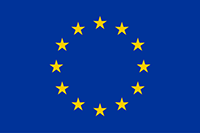I am looking for information as
Researcher

Industry

Patient

Tools
As an organisation that provides expertise and specific tools to the biobanking community, BBMRI-ERIC recommends the following tools:
MIABIS 2.0
MIABIS 2.0 represents the minimum information required to initiate collaboration between biobanks and to enable the exchange of biological samples and data. The aim is to facilitate the reuse of bio-resources and associated data by harmonising biobanking and biomedical research.
Who to contact? roxana.martinez@ki.se
Click here to go to MIABIS 2.0
BIBBOX Demo
BIBBOX is a demonstration website of the tools integrated within the Reference IT tools for biobanks, developed as a part of the BBMRI-ERIC Common Service IT.
Who to contact? heimo.mueller@medunigraz.at
Click here to go to BIBBOX Webpage
BRIF
BRIF (Bioresource Research Impact Factor) is an initiative to create a framework that allows setting up indicators for the use of bioresources and rewarding mechanisms. Bioresources are defined as collections of biological samples with associated data (medical/epidemiological, social), databases independent of physical samples or other collections of biomolecular and bioinformatics research tools.
Who to contact? laurence.mabile@univ-tlse3.fr
COBRA
In addition to BRIF, the CoBRA (Citing of Bioresources in Research Articles) guideline provides guidance for citing bioresources in academic literature: it specifies where and how to cite bioresources in each section of a research article.
Use the CoBRA checklist when writing a scientific article.
Who to contact? elena.bravo@iss.it




